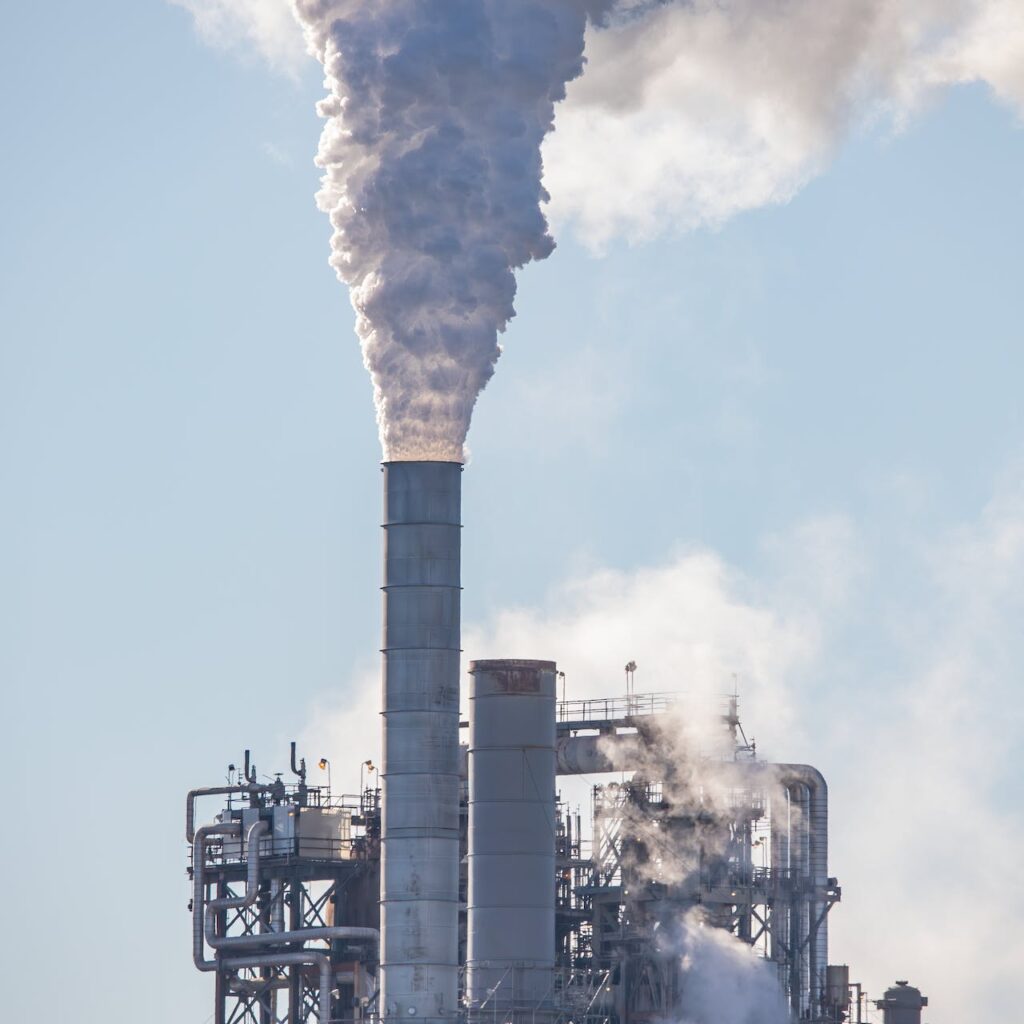In the quest for understanding and confronting the challenges posed by air pollution, this article delves into the Air Quality Index (AQI) of various cities and regions, seeking to draw conclusions and propose strategies for improvement.
The AQI is a numerical representation of atmospheric pollution, encompassing dust particles, COx, NOx, SOx, and more. Ranging from 0 to 500, it categorizes pollution levels as follows:
- 0 AQI: No pollution
- 0-50 AQI: Low pollution
- 50-100 AQI: Moderate pollution
- 100-150 AQI: High pollution
- 150-200 AQI: Severe pollution
- 200-250 AQI: Health hazard pollution
Analyzing AQI Levels of Delhi
Delhi, with an AQI of 274, exemplifies the challenges faced. Post-Diwali, the AQI spikes to nearly 300. Key contributors include PM2.5 pollution, with road dust, vehicles, domestic fuel burning, and industrial point sources playing significant roles.
Sources of Pollution:
- PM10 pollution is primarily from road dust, concrete batching, industrial point sources, and vehicles.
- NOx emissions stem from industrial point sources (52%) and vehicles (36%).
- SO2 emissions are predominantly from industrial point sources (90%).
- CO emissions are led by vehicles (83%).
Major Contributors in Delhi:
The Badarpur Thermal Power Station, a coal-fired plant, produces a disproportionate share of particulate matter pollution despite contributing less than 8% to the city’s electric power. Crop burning during certain seasons can account for up to 45% of Delhi’s pollution.
Comparative Analysis
Air Quality Index (AQI) levels in various Asian regions reflect the complex interplay of urbanization, industrialization, and environmental policies. In South Asia, major cities such as Delhi, Mumbai, Kolkata, Lahore, Karachi, and Dhaka grapple with high AQI levels, influenced by burgeoning populations, rapid industrial growth, and vehicular emissions. Delhi, for instance, consistently experiences AQI readings well above 150, indicative of severe pollution, with specific factors like crop burning and industrial emissions contributing significantly.
Moving to the Middle East, oil-rich cities exhibit notable AQI levels. Al Jahra, Kuwait with an AQI of 170, sets the tone, while Baghdad at 161 and Kuwait City at 148 emphasize the environmental challenges in oil-centric urban landscapes. These cities grapple with pollution from both industrial activities and vehicular emissions, compounded by the prevalent reliance on fossil fuels.
In Southeast Asia, the air quality situation varies. While cities in countries like Thailand and Indonesia face pollution challenges, there are notable regional disparities. Examining these AQI levels underscores the need for tailored solutions, considering each region’s unique mix of industrial practices, transportation patterns, and urbanization dynamics. As Asia grapples with these air quality challenges, a comprehensive approach addressing specific local factors is imperative for sustainable improvements in environmental health.
Identifying Culprits and Solutions
Reducing Air Quality Index (AQI) levels demands a holistic approach, targeting key sources of pollution. Industries can mitigate emissions by adhering to stringent standards, adopting cleaner technologies, and embracing renewable energy. Encouraging the widespread adoption of electric vehicles not only curtails vehicular emissions but also fosters a shift toward sustainable transportation. Responsible industrial processes, marked by pollution control measures, contribute significantly to cleaner air.
Addressing agricultural contributions to pollution necessitates promoting sustainable farming practices and regulating open burning. Mitigating road dust involves enforcing dust control measures and optimizing road infrastructure. In the power generation sector, transitioning to cleaner energy sources and adopting advanced technologies can substantially reduce emissions. These high-level solutions underscore the importance of a multi-sectoral, collaborative approach, with governments, industries, and communities working together to create a healthier and more sustainable environment.

Photo by Cindy Shebley: https://www.pexels.com/photo/smog-coming-out-of-the-factory-15279487/
Global Correlations
The correlation between population density, rapid industrial growth, and Air Quality Index (AQI) levels unveils a narrative of environmental challenges in bustling cities. High-density urban centers like Delhi, Mumbai, Kolkata, Lahore, Karachi, and Dhaka, emblematic of South Asia, exhibit consistently elevated AQI levels. This region stands out as a substantial contributor to the global air pollution landscape.
In an international context, a stark contrast emerges between Asian and European cities. Cities like Bern, Canberra, Helsinki, San Francisco, and select Japanese cities boast remarkably low AQI levels (12 to 17), emphasizing the link between cleaner air and conscientious urban planning. Conversely, the so-called “pretty cities” with AQI levels between 17 to 25, including Madrid, Istanbul, Brussels, Amsterdam, Munich, Osaka, and Rotterdam, exhibit some pollution but maintain a relatively high quality of life.
As AQI levels reach 25 to 30 in larger metropolises such as Paris, Rome, Toronto, and Kyiv, a shift towards increased pollution becomes apparent. The trend intensifies further with AQI close to 50 in cities like Hong Kong, Shenzhen (China), Thai cities, and Santiago (Chile), indicating a growing challenge in maintaining air quality.
Analyzing AQI becomes a nuanced process, involving scrutiny of population, key industries, electricity sources, living conditions, and combustion practices. It is evident that AQI not only correlates with the quality of life but also serves as a barometer of socio-economic disparities. Cities with higher AQI levels often house populations facing economic challenges, reflected in their living conditions, combustion practices, and the overall environmental impact. As global urbanization continues, recognizing and addressing these disparities is crucial for fostering sustainable and healthy urban environments.
Air Quality in Indian States
The Air Quality Index (AQI) paints a distressing picture of air pollution across Indian states, with a disconcerting hierarchy from worst to less worse. Unsurprisingly, the national capital, Delhi, leads the grim lineup, followed by Bihar, West Bengal, Uttar Pradesh, Rajasthan, Puducherry, Odisha, Maharashtra, Madhya Pradesh, Jharkhand, Haryana, Gujarat, Daman and Diu, and Dadra Nagar Haveli.
A unique facet emerges as Northeast India stands out with AQI levels consistently below 50, acting as an environmental anomaly amid the broader concerns. However, the Ganga basin, home to major cities like Lucknow, Allahabad, Patna, Kanpur, Kolkata, and Varanasi, grapples with some of the world’s most alarming air quality issues.
The Yamuna river, with cities such as Baghpat, Delhi, Noida, Mathura, Agra, Firozabad, Etawah, Kalpi, Hamirpur, and Prayagraj along its banks, shares a similar fate. The Ganga basin, marked by an average population density of 520 persons per square kilometer (compared to the national average of 312 in 2001), witnesses significant urbanization and industrial expansion.
Industries along the Ganges contribute substantially to pollution. Chemical, distillery, dyeing, textile, bleach, food, dairy, beverage, pulp and paper, sugar, and tannery industries play pivotal roles in shaping the environmental narrative. Notably, cities like Kanpur, Prayagraj, Varanasi, and Patna emerge as industrial hubs, hosting a multitude of sectors, including tanneries, chemical plants, textile mills, distilleries, slaughterhouses, and hospitals.
This concentration of diverse industries along the Ganges riverbanks underscores the urgent need for stringent environmental regulations and sustainable practices. Balancing industrial growth with environmental stewardship is paramount to alleviate the burgeoning air quality crisis in these densely populated and industrially significant regions, safeguarding the health and well-being of the communities dependent on the Ganga basin.
Solutions for AQI Improvement
To ameliorate Air Quality Index (AQI) levels, a multifaceted approach is imperative. The reduction of industrial emissions serves as a pivotal step, necessitating the enforcement of stringent emission standards, the promotion of cleaner technologies, and the encouragement of renewable energy adoption. Simultaneously, controlling vehicle emissions is crucial through initiatives like improving public transportation, advocating for electric and hybrid vehicles, and enforcing emission standards.
Effective traffic management strategies contribute significantly to AQI improvement. Implementing carpooling, congestion pricing, and investing in non-motorized transportation options collectively alleviate the burden of vehicular emissions on air quality. Regulation of construction activities and road dust is paramount, involving the enforcement of dust control measures at construction sites and the paving and watering of unpaved roads.
Addressing agricultural practices, promoting sustainable agriculture, and regulating open burning are essential components of AQI improvement. Similarly, mitigating residential emissions involves promoting cleaner cooking technologies and enforcing regulations on residential burning. Prioritizing green spaces and urban planning contributes to overall air quality enhancement. Finally, proactive waste management, including proper disposal and regulatory enforcement, is crucial. The establishment of air quality monitoring networks, real-time data utilization, and the enforcement of stringent environmental regulations, alongside public awareness campaigns and education on pollution sources, complete a comprehensive strategy to achieve tangible improvements in AQI levels.


Leave A Comment